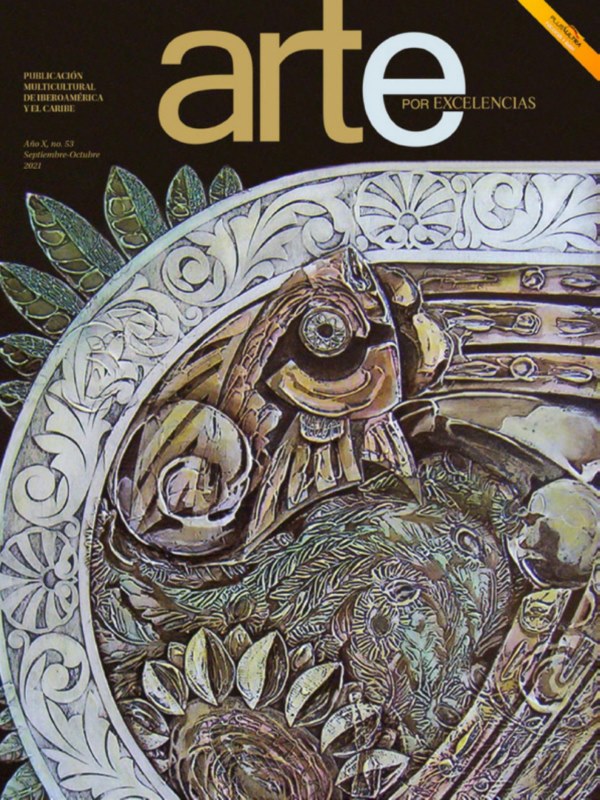A Spanish journalist says there are books and there are jewels. I would say there are books, there are jewels and there are jewels of a crown. And just for the record, I’m a lucky person: I have one. Mine is not made out of precious metal, not even rough metal. It isn’t either “absolute mineralized.” It is made out of paper and painted in orange. It is called Anthology of critical texts. 1979-2006 and is signed by Luis Camnitzer.
I’m telling you, you have to have it, get it by force, buy it, steal it… (but not mine people, because unfortunately, it’s not mine). So, we owe this book of classic lineage to editors Maria Clara Bernal and Felipe Gonzalez, both from the University of The Andes, who collected for us the texts published by the critic and artist in the Arte en Colombia / Art Nexus magazine.
 The book is a 309-page review of more than twenty years of critical work. It is divided into general texts about art theory and history: Ideology vs. Aesthetics: Nazi Art, the thirties; Is it possible to teach art? Art and Ideology I; Access to the main current; and The restricted definition of art. Next we find critical reviews (I personally recommend the ones on Yves Klein, Joseph Beuys and Christo, which may not be the best, they probably are not the best, but I find it interesting how the work by those myths of contemporary artists, particularly the first two, who are so fascinating to Cuban artists, is dismantled).
The book is a 309-page review of more than twenty years of critical work. It is divided into general texts about art theory and history: Ideology vs. Aesthetics: Nazi Art, the thirties; Is it possible to teach art? Art and Ideology I; Access to the main current; and The restricted definition of art. Next we find critical reviews (I personally recommend the ones on Yves Klein, Joseph Beuys and Christo, which may not be the best, they probably are not the best, but I find it interesting how the work by those myths of contemporary artists, particularly the first two, who are so fascinating to Cuban artists, is dismantled).
The reader of this call knows I’m not overreacting because I’m talking about one of the most versatile artists of the American continent. Forerunner of conceptualism, he has succeeded in combining his career, image synthesis with concept analytics. He creates and creates again pondering about creation. And all of this is stated in the aforementioned anthology, allied witness of his sharp review for more than two decades.1 We have a similar case in our context. His name is Antonio Eligio Fernandez (Tonel), who also alternates both “jobs” with crushing excellence.
Born in Germany in 1937, Luis Camnitzer was taken by his father to Uruguay and from there he moved to New York in 1964. These geographical movements predisposed him in a positive way to understand his analyses, to develop a critical thinking towards the artistic context that places him, as well as Slavoj Žižek, in a territory of appealing dissidence facing all possible flanks.2 Not to trust the hedonism of the center while the periphery pulses other rhythms of dissatisfaction and violence. Be suspicious, at the same time, of all legitimizing patterns of artistic facts, even of him. And so forth. In this regard Gerardo Mosquera wrote: “There is a very fluid connection between Luis Camnitzer’s conceptual art and his writings about the practice, which are frequently an interpretation of art of the center from a Latin American perspective.” 3
On the other hand, Cuban readers are very aware of the organic intellectual that is Camnitzer. Author of New Art of Cuba, a book whose dedication was saved for Ana Mendieta, the German-Uruguayan coined the term “Cuban renaissance” and opened a highway for the promotion of Cuban art outside the island. The title that served as metaphor to weight Cuban plastics creation in the 1980s has been the most used in the language of critic reviews and researches on the topic. Hence an anthology by Camnitzer, in our context where Art Nexus circulates in a trifling manner drawing short-circuits in its path, acquires an added value that is hard to price.
Most of the texts included in the book are reviews of both individual and collective exhibits made in New York city, therefore, in addition of being able to appreciate Camnitzer’s critical judgment regarding important phenomena and artists of the 20th century, we can come closer to New York’s artistic life, and we are aware of what it could mean in such a metropolitan environment from the postwar years through our days. A review of Havana Biennial and another one of Venice Biennial enable to appreciate the interests of the artist-writer (isn’t it the same thing?).
But beyond that, the nub of his writing in my opinion lies in the ethical filter through which the author sieves up to the last atom of the work, project or career. He rarely let it go when ethical disturbances or certain moral malformation tarnish any artistic proposal. After lashing the didactic nature of some of Joseph Beuys’ works of art, Camnitzer is categorical in his observations and goes beyond art to enter culture, as Benjamin Buchloh did years later when he saw Beuys “as the producer of the new German cultural mythology”. This is what Camnitzer says:4
Beuys is refined up to the smallest detail in his looks. He always shows up wearing gray felt hat, always with a messianic-fanatical look in his eyes, always ready to discuss anything with anybody, heavily and apparently without much humor. Beuys in himself is a piece of work predisposing the myth. It is this aware or unaware (it doesn’t matter) will of myth will, the only element unifying his work and making the highly confusing and contradictory image he projects neater.
Both of them have gone beyond the symbolic (or allegoric) production to enter a field that, attached to the “art world,” for better or for worse. Nevertheless, the ethic issue in Camnitzer is not exclusive to his reviews, but it is the core of several essays compiled here: Ideology vs. Aesthetics: Nazi Art, the thirties, Art and Ideology II and Access to the main current. Outside this anthology we find for example Immaculate Art? and Corruption in art/art of corruption, among others.
In “Access to …” he says:5
We live in the alienating myth that we are primarily artists. We are not. We are essentially ethical beings that can tell right from wrong, fair from unfair, not only in the individual context but also in community and regional contexts. To be able to ethically survive we need a political conscience to help us understand the place we live in and develop strategies for our actions.”
This statement basically dots the i’s and crosses the t’s, sealing any apolitical pretension of those wanting to turn a blind eye.
1There are people who know him better as a critic than as a painter.
2The case of Slavoj Žižek was explained by Ivan de la Nuez as follows: “Žižek leaves the dissident archetype–Solzhenitsin or Havel, for example– and enters another space that allows him to practice dual critic: against the well thinking left of the First World and against the conventional idea the Western has had about dissidence.” In Red Fantasy. Leftwing intellectuals and the Cuban Revolution, Random House Mondadori, 2006, p. 135.
3Gerardo Mosquera: Walking with the devil. Text about art, internationalism and cultures, Exit publishing house, 2010, p. 119.
4In Anthology of Critical texts…, p. 93.
5Ibídem, p. 71.
Publicaciones relacionadas

Un tejido expositivo con genuinos imaginarios
Diciembre 19, 2024
Geo Ripley: De la sombra a la luz
Diciembre 11, 2024















